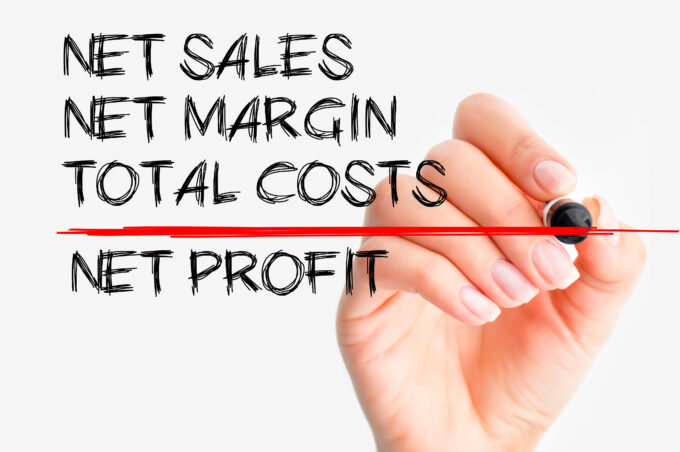Being able to predict your business’s success, at least partially, would make things easier for you as a business owner. Is that possible? Well, it is. The only thing you need to do is to understand and track several financial numbers. Chances are you’ll be taking on too much debt if you don’t or don’t know how to track your finances. Obviously, it will set you up for complete failure in the long run.
Take a closer look at the financial metrics every business owner should monitor below.
Cash Flow
What’s cash flow? It’s simply a measure of how much money comes in and goes out of the business over a given period of time. If you have greater positive cash flow, then, you actually have more money coming in to your company than leaving it, so you can afford to pay off your bills in running your business. However, when you’re down the road with negative cash flow, you’ll be facing many obstacles. One of these obstacles is the inability to pay for your bills. It can be very difficult to pay off debt and bills when you’re paying on a negative cash flow basis.
That’s why one of the items that you’ll want to check or monitor in your business is the cash flow statement that’s typically prepared by an accountant. If you’re not working with an accountant yet, it’s best to visit websites of reputable accounting firms, like pagekirk.co.uk, to see what they can offer to your company. It should have a large number of positive cash flow statements and should list all of the different aspects of how the company is doing financially.
Accounts Payable

The accounts payable refers to any money owing by a company to its creditors, generally shown on the company’s balance sheet as a credit to the company. It differs from notes payable, which are legal obligations created through formal legal instruments, such as notes receivable. In other words, a company is obligated to repay a specific amount of money in a certain period of time, with interest.
The accounting records of a company are used to determine what’s due and when it should be paid off, either through regular monthly payments, interest-only payments, or a combination of both. Most companies have their own accounting records and are responsible for paying their own invoices. If you have accounts payable, you should always try to settle them as soon as possible, although, in some cases, you can do so over a period of months, especially those coming from a business loan.
Accounts Receivable
When most people think of accounts receivable, they usually think of it as ‘cash.’ Receivables are bills that your clients call you for. Usually, your receivables consist of bills that your clients owe you. You may not see the bill itself until you receive payment for the sale of a customer’s account, or before your client pays any bills you may have with them. By establishing accounts receivable, you’re able to quickly and easily collect the money that you need to service your clients’ accounts. As a result, you can take control over your finances so that you’ll never have to worry about getting paid by your clients.
Profit And Loss
The profit and loss (P&L) is a basic financial statement used by people and companies to document their financial status and to evaluate the financial health of the business. Other types of profit and loss statement are the income statement, the balance sheet, and the cash flow analysis. Profit and loss statements can be used as an aid to managerial decision making, management analysis, and business planning. The profit and loss statement is used for the purpose of evaluating the profitability and financial health of a company.
Net Income
Another financial number to monitor in any business is net income. So, what’s net income? It’s simply the amount that you have left over after deducting everything from taxes to mortgage interest payments. It’s almost identical to the actual income that you have, except for tax payments and other expenses.
The concept behind how much money you have left over after deducting everything, as well as your tax returns, is to determine what percentage of your income you’re earning. After deducting all expenses and taxes, you’ll come up with your personal net income. This is basically how much income you’re receiving that you can actually afford to pay bills and other operational expenses of your business on a daily basis.
Gross Margin

How is gross margin calculated? In business, gross margins are useful indicators of a company’s profitability. Basically, a profit margin refers to the percentage of sales that’s profit—the lower the margin, the higher this percentage is. This is very important when comparing a company’s overall profitability and determining whether it’s hitting targets at all.
There are several ways to calculate gross margin. Some companies use a mathematical formula that requires them to consider all of the factors, such as the size, volume, and brand of a certain product or the price it charges for a certain service or commodity. Some businesses use the sales tax rates in their location, which they consider as an additional source of information and use to determine the profitability of a particular product or service.
Finally, there are also some companies that only need to take into consideration the prices of products sold by their competitors, and, then, determine how much profit they can make from selling similar products.
Cash Burn Rate

Calculating cash burn rate is a good way to know if your company uses their reserves to the fullest potential. Calculating cash burn rate gives a company’s reserves a numerical value based on historical data and present-day cash reserves.
Final Thoughts
Every business owner has to monitor cash flow, accounts payable, accounts receivable, profit and loss, net income, gross margin, and cash burn rate. By doing so, one can ensure that a business won’t face any future potential issues. The most common mistake that results in small businesses failing is not being able to keep track of the numbers mentioned above. If you’re not entirely sure how to carry out the monitoring of those financial numbers yourself, don’t hesitate to reach out to accounting experts.











